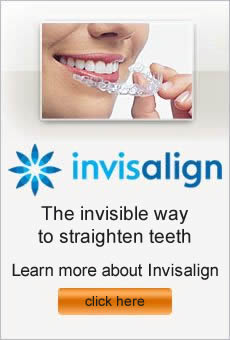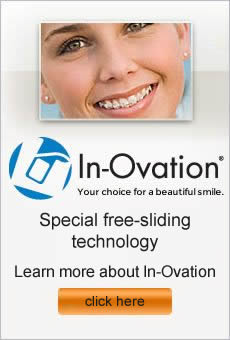The goal of orthodontics is to improve the appearance of function of your teeth and jaw, and various kinds of appliances help achieve that goal. Each patient’s treatment plan is unique, but here are some common appliances that orthodontists use to correct oral problems.
Rubber bands
Elastics, or rubber bands, are sometimes needed to create force that will help correct your bite. They are often stretched between upper and lower braces, kept in place by attaching them to hooks. For the fastest outcome, strictly following your orthodontist’s directions for wearing the elastics is the best approach. You may experience tenderness at first because your teeth are moving, but it will fade after a few days of consistent wear.
Headgear
Malocclusions may require the use of appliances like headgear, which attaches to your braces and pulls on both your teeth and jaw to create movement into better positions. There are different types of headgear for different goals, such as the direction of pull needed on your jaw. Often, orthodontists recommend that headgear be worn at night so that there is less embarrassment or hassle associated with the appliance. If your orthodontist suggests headgear is needed for optimum treatment of your condition, it is likely the best way to achieve your orthodontic goals and the guidelines should be followed for use.
Retainers
Once your braces have done their job and are removed from your teeth, treatment is usually not over. Most of the time, orthodontists provide retainers to help your teeth maintain their new positions. Over time, your teeth will settle into their new spots and your orthodontist may allow you to quit wearing the retainers, but until that time you should follow the directions for consistent use. That is the ideal way to keep your beautiful new smile.
If you need an orthodontist in Sherman Oaks, CA contact our office for an appointment.
Unsightly teeth can be embarrassing, annoying, and unhealthy. Many people seek correction with traditional braces, but the trend is moving toward a less painful and less noticeable approach. Invisalign clear plastic aligners help you achieve a great smile with fewer impacts on your lifestyle during the process.
Fewer hassles
Invisalign provides the same outcome of a beautiful smile as traditional braces, but without the same hassles. The removable aligners are taken out of your mouth while eating, which means there are no diet restrictions. You can also perform your regular oral hygiene tasks without complications of working around appliances cemented in your mouth. There are no painful wire tightenings, and the invisible aligners allow you to smile confidently throughout treatment.
Variety of corrections
Similar to other types of orthodontics, Invisalign treats many types of problems. Some of the problems that can be corrected include teeth overcrowding, spacing, bite issues, and crooked teeth. Only extremely severe orthodontic problems are outside the realm of Invisalign correction.
Good oral health
Because it is easier to clean your teeth and gums during Invisalign treatment than with traditional braces, it is possible to maintain good oral health. Bacteria and food particles can be eliminated with normal brushing and flossing, so with proper hygiene you can achieve healthy teeth and gums.
Easy maintenance
Less visits to your orthodontist are required with Invisalign. You will be provided with about a set of aligners to accomplish treatment, and you change trays every 2 weeks or so at home. You only need to go in for an office visit once every couple of months to monitor treatment and ensure good results.
Invisalign dentist in Sherman Oaks
You might think that teenagers are the primary age group who are candidates for orthodontic treatment, but it is not unusual for younger children to begin treatment these days. Early intervention, or interceptive orthodontics, may prevent more severe issues later with the mouth, bite, and jaw.
Teens and adults have gotten all of their permanent teeth, which means that any orthodontic treatment will involve correcting existing problems. Some of the most common reasons that people in these ages need braces is teeth crowding, crooked teeth, bite misalignment, protruding teeth, and other problems related to the placement or position of the teeth and jaw. Interceptive orthodontics seeks to avoid such problems in the first place.
Early intervention provides treatment of the mouth, jaw, and palate while the child is still growing. Issues that resulted from thumb sucking or pacifier dependence can be corrected, since these habits can affect the jawbone and cause teeth misalignment. Teeth may become crooked, especially front teeth which can stick out. Tongue and bite problems also can be related to pacifier use or thumb sucking.
Interceptive orthodontics may involve adding spacer appliances to the mouth, which are used to reshape the jaw and palate or improve teeth spacing. Palate issues or uneven jaw growth can also be more easily treated while a child is growing, because the tissues are more pliable and soft. Treatment at younger ages may shorten braces time after permanent teeth erupt, or avoid braces later completely. It can also prevent more intrusive procedures when the child gets older.
To learn about orthodontic option in the Burbank CA area, schedule your appointment today.
Orthodontic emergencies don’t happen very often, but minor problems are not uncommon. Most issues can be temporarily resolved until you are able to schedule an appointment with your orthodontist. It is helpful to know the parts of your braces and appliances so that you can tell your orthodontist what is wrong. Here are some of the typical issues that may arise when wearing braces.
Loose bracket
If the bracket remains attached to the wire, leave it alone and just cover it with wax so that it does not irritate your cheek or gums. If the bracket is no longer connected to the wire, place the bracket in a safe place so that you can take it to your orthodontist.
Loose wire
Use tweezers to reposition the wire back into place, or use a nail clipper to cut the wire behind the last tooth where it is securely attached. Put wax over the wire to protect from yourself from irritation.
Loose appliance
Do not try to remove any parts of your appliances yourself. If it is loose or poking you, place wax over the bothersome area until you can see your orthodontist.
Poking wire
Try using the eraser end of a pencil to push the wire out of the way so it stops poking you. If it is still uncomfortable, place wax on the wire.
Headgear
If your headgear is uncomfortable, first consult the instructions provided by your dentist to ensure you are wearing it correctly. Also, wear your headgear for the recommended amount of time because it becomes more comfortable with wear. If the facebow is bent, call your orthodontist to see if an appointment is needed.
Soreness
General soreness is normal when you initially get braces and after tightening adjustments. Take over-the-counter pain relievers, rinse with warm salt water, or place some oral gel on the affected area. While you’re getting used to the braces, you may experience irritation on your cheeks, tongue, or lips. Place wax on the braces in the irritating areas as needed until you become accustomed to them.
If you live in the Burbank CA area and you are looking for and orthodontist, contact our office today Dr. Fotovat has over 15 years of experience.
A revolutionary new method is available for helping you achieve the beautiful straight smile you’ve always wanted. Invisalign uses a series of clear, removable aligning trays to gradually shift your teeth into better position. This invisible approach is appealing to both adults and teens.
The strongest selling point for both age groups is the fact that others don’t notice that you’re undergoing orthodontic treatment. You wear a set of clear plastic aligners for about two weeks, which you can remove any time you’d like. However, it’s important to wear them for the timeframe recommended by your orthodontist to get the ideal results in the quickest timeframe. Every couple of weeks, you will change aligners to the next in the series provided. This straightens your teeth gently and gradually without the discomfort or inconvenience associated with traditional braces.
It is a real advantage that the Invisalign trays are removable. This means that adults and teens alike can eat and drink what you’d like throughout treatment, because there are no diet restrictions as with traditional braces. This also allows you to continue your normal brushing and flossing routine, and there are no worries about food becoming stuck in any cumbersome wires and brackets.
Invisalign does not require as many checkup appointments as traditional braces either. Most orthodontists advise you to come in to monitor progress only once every six weeks or so, and total treatment time with Invisalign averages from 9 to 15 months. State-of-the-art 3D computer imaging allows you and your orthodontist to see your progress during treatment, so you’ll be able to watch your teeth move and see how much farther you have to go.
Both teens and adults appreciate the way that Invisalign fits easily into a busy lifestyle. They don’t hamper your ability to participate in sports, play musical instruments, smile for special occasion photos, and other important things that come up in life. Invisalign offers a comfortable, effective, and practical way to transform your smile.
The advantages of receiving orthodontic treatment are more than just cosmetic. Straight teeth do make a beautiful smile, but they are also better for your overall long term oral health. Improvements in your self-esteem are also likely when you have an attractive smile. Patients seek orthodontic treatment for a number of important reasons beyond how the results look.
Teeth spacing
Crooked or overlapping teeth are difficult to clean thoroughly. Plaque and germs can build up to cause tooth decay and cavities. Straightening your teeth with orthodontic treatment allows you to clean your teeth more effectively. This helps you fight cavities, decay, gum disease, and even tooth loss.
Alignment
When teeth are not aligned correctly, it is called malocclusion. This contributes to improper wear patterns on your teeth, which can ultimately lead to the need for dental veneers or bonding. Stress on your jaw muscles can also result, causing jaw pain. Malocclusion also may affect your bones and gums that support your teeth, which can end up in tooth loss if not treated.
Bite
An overbite is when the upper teeth overlap the bottom teeth, which may cause uneven or excessive wear on the teeth. Chips requiring dental repair can occur from an overbite, especially on the bottom teeth. An open bite is when the front teeth do not touch at all when you bite. This can lead to excessive pressure and wear on the back teeth. Bite problems are commonly corrected with orthodontic treatment.
Function
Braces or other orthodontics typically improve the function of your teeth. You may be able to bite and chew your food better, as well as speak more clearly. Orthodontic treatment improves your chances for better long-term function and health of your teeth and gums.
Dr. Fotovat is an orthodontist treating patients in the Sherman Oaks, CA area.



